After reading this chapter, you should be able to understand and articulate answers to the following questions:
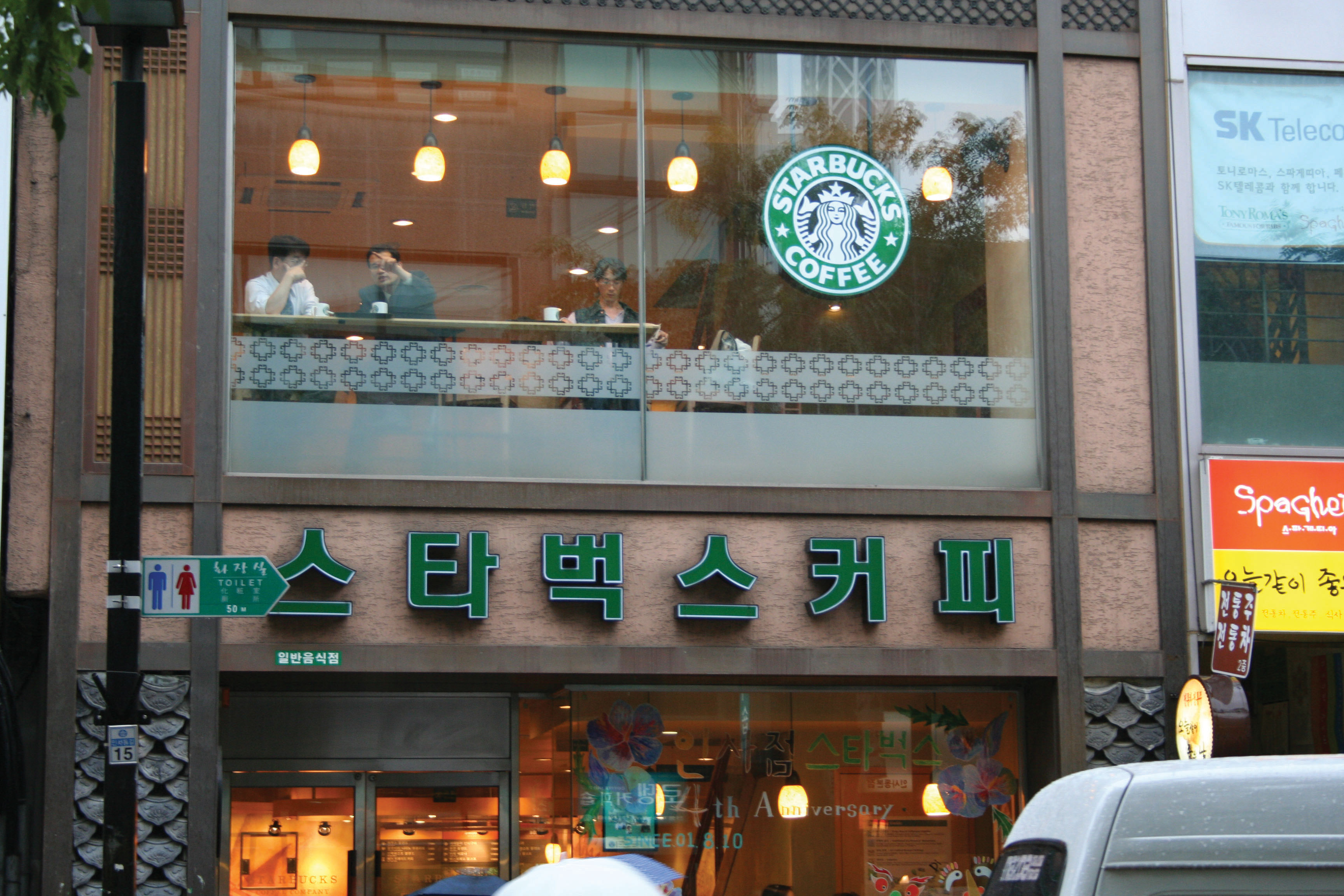
Starbucks’s global empire includes this store in Seoul, South Korea.
Image courtesy of Wikimedia, http://commons.wikimedia.org/wiki/File:Starbucks-seoul.JPG.
March 30, 2011, marked the fortieth anniversary of Starbucks first store opening for business in Seattle, Washington. From its humble beginnings, Starbucks grew to become the largest coffeehouse company in the world while stressing the importance of both financial and social goals. As it created thousands of stores across dozens of countries, the company navigated many interesting periods. The last few years were a particularly fascinating era.
In early 2007, Starbucks appeared to be very successful, and its stock was worth more than $35 per share. By 2008, however, the economy was slowing, competition in the coffee business was heating up, and Starbucks’s performance had become disappointing. In a stunning reversal of fortune, the firm’s stock was worth less than $10 per share by the end of the year. Anxious stockholders wondered whether Starbucks’s decline would continue or whether the once high-flying company would return to its winning ways.
Riding to the rescue was Howard Schultz, the charismatic and visionary founder of Starbucks who had stepped down as chief executive officer eight years earlier. Schultz again took the helm and worked to turn the company around by emphasizing its mission statement: “to inspire and nurture the human spirit—one person, one cup and one neighborhood at a time.”Our Starbucks mission statement. Retrieved from http://www.starbucks.com/about-us/company-information/mission-statement. Accessed March 31, 2011. About a thousand underperforming stores were shut down permanently. Thousands of other stores closed for a few hours so that baristas could be retrained to make inspiring drinks. Food offerings were revamped to ensure that coffee—not breakfast sandwiches—were the primary aroma that tantalized customers within Starbucks’s outlets.
By the time Starbucks’s fortieth anniversary arrived, Schultz had led his company to regain excellence, and its stock price was back above $35 per share. In March 2011, Schultz summarized the situation by noting that “over the last three years, we’ve completely transformed the company, and the health of Starbucks is quite good. But I don’t think this is a time to celebrate or run some victory lap. We’ve got a lot of work to do.”Starbucks CEO: Can you “get big and stay small” [Review of the book Onward: How Starbucks fought for its life without losing its soul by Howard Schultz]. 2011, March 28. NPR Books. Retrieved from http://www.npr.org/2011/03/28/134738487/starbucks-ceo-can-you-get-big-and-stay-small. Indeed, important questions loomed. Could performance improve further? How long would Schultz remain with the company? Could Schultz’s eventual successor maintain Schultz’s entrepreneurial approach as well as keep Starbucks focused on its mission?
Good business leaders create a vision, articulate the vision, passionately own the vision, and relentlessly drive it to completion.
Jack Welch, former CEO of General Electric
Many skills and abilities separate effective strategic leaders like Howard Schultz from poor strategic leaders. One of them is the ability to inspire employees to work hard to improve their organization’s performance. Effective strategic leaders are able to convince employees to embrace lofty ambitions and move the organization forward. In contrast, poor strategic leaders struggle to rally their people and channel their collective energy in a positive direction.
As the quote from Jack Welch suggests, a visionWhat the organization hopes to become in the future. is one key tool available to executives to inspire the people in an organization (Figure 2.1 "The Big Picture: Organizational Vision"). An organization’s vision describes what the organization hopes to become in the future. Well-constructed visions clearly articulate an organization’s aspirations. Avon’s vision is “to be the company that best understands and satisfies the product, service, and self-fulfillment needs of women—globally.” This brief but powerful statement emphasizes several aims that are important to Avon, including excellence in customer service, empowering women, and the intent to be a worldwide player. Like all good visions, Avon sets a high standard for employees to work collectively toward. Perhaps no vision captures high standards better than that of aluminum maker Alcoa. This firm’s very ambitious vision is “to be the best company in the world—in the eyes of our customers, shareholders, communities and people.” By making clear their aspirations, Alcoa’s executives hope to inspire employees to act in ways that help the firm become the best in the world.
The results of a survey of one thousand five hundred executives illustrate how the need to create an inspiring vision creates a tremendous challenge for executives. When asked to identify the most important characteristics of effective strategic leaders, 98 percent of the executives listed “a strong sense of vision” first. Meanwhile, 90 percent of the executives expressed serious doubts about their own ability to create a vision.Quigley, J. V. 1994. Vision: How leaders develop it, share it, and sustain it. Business Horizons, 37(5), 37–41. Not surprisingly, many organizations do not have formal visions. Many organizations that do have visions find that employees do not embrace and pursue the visions. Having a well-formulated vision employees embrace can therefore give an organization an edge over its rivals.
In working to turnaround Starbucks, Howard Schultz sought to renew Starbucks’s commitment to its missionThe reasons for an organization’s existence. statement: “to inspire and nurture the human spirit—one person, one cup and one neighborhood at a time.” A mission such as Starbucks’s states the reasons for an organization’s existence. Well-written mission statements effectively capture an organization’s identity and provide answers to the fundamental question “Who are we?” While a vision looks to the future, a mission captures the key elements of the organization’s past and present (Figure 2.2 "Missions").
Organizations need support from their key stakeholders, such as employees, owners, suppliers, and customers, if they are to prosper. A mission statement should explain to stakeholders why they should support the organization by making clear what important role or purpose the organization plays in society. Google’s mission, for example, is “to organize the world’s information and make it universally accessible and useful.” Google pursued this mission in its early days by developing a very popular Internet search engine. The firm continues to serve its mission through various strategic actions, including offering its Internet browser Google Chrome to the online community, providing free e-mail via its Gmail service, and making books available online for browsing.
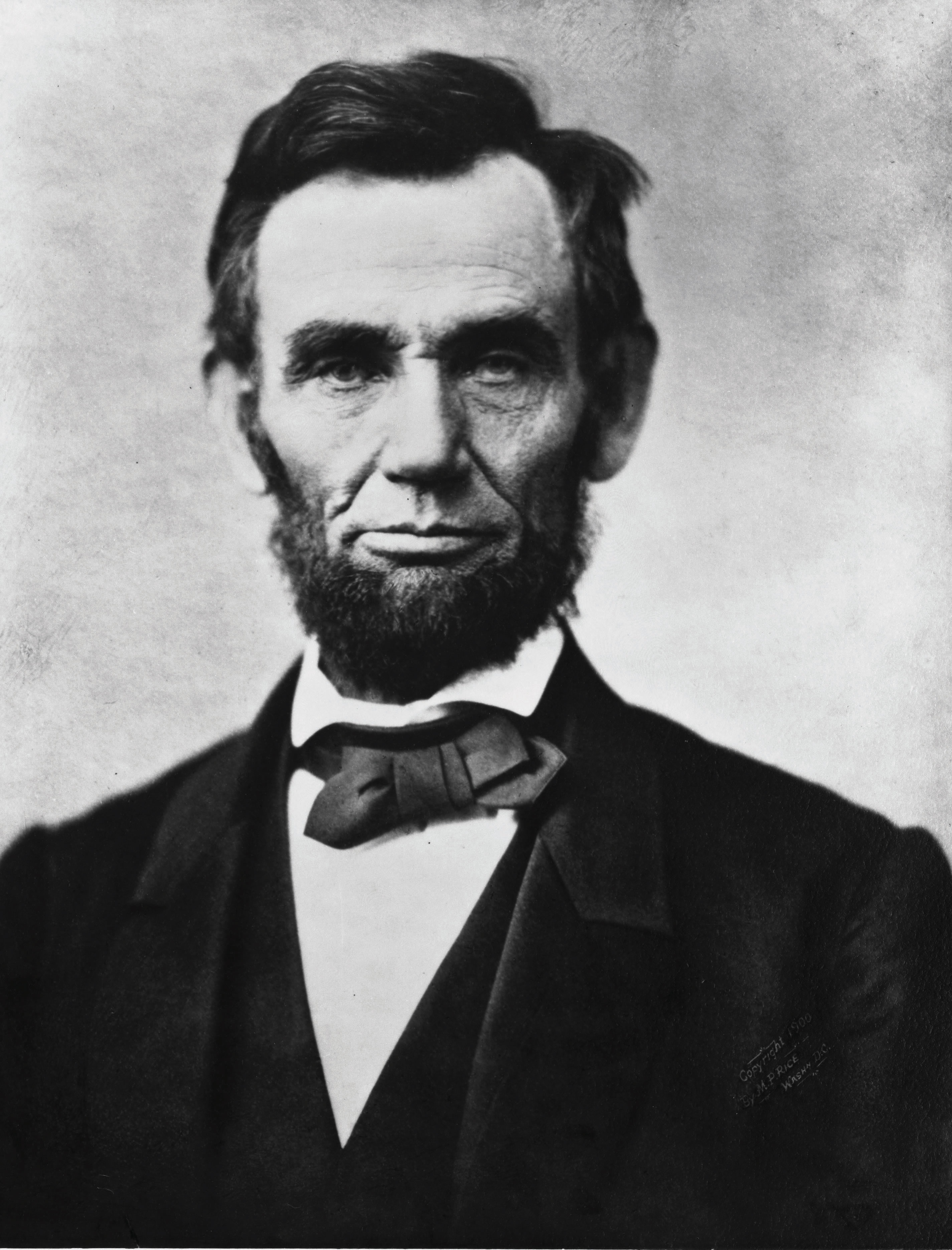
Many consider Abraham Lincoln to have been one of the greatest strategic leaders in modern history.
Image courtesy of Alexander Gardner, http://wikimediafoundation.org/wiki/File:Abraham_Lincoln_head_on_shoulders_photo_portrait.jpg.
One of Abraham Lincoln’s best-known statements is that “a house divided against itself cannot stand.” This provides a helpful way of thinking about the relationship between vision and mission. Executives ask for trouble if their organization’s vision and mission are divided by emphasizing different domains. Some universities have fallen into this trap. Many large public universities were established in the late 1800s with missions that centered on educating citizens. As the twentieth century unfolded, however, creating scientific knowledge through research became increasingly important to these universities. Many university presidents responded by creating visions centered on building the scientific prestige of their schools. This created a dilemma for professors: Should they devote most of their time and energy to teaching students (as the mission required) or on their research studies (as ambitious presidents demanded via their visions)? Some universities continue to struggle with this trade-off today and remain houses divided against themselves. In sum, an organization is more effective to the extent that its vision and its mission target employees’ effort in the same direction.
An organization’s vision and mission offer a broad, overall sense of the organization’s direction. To work toward achieving these overall aspirations, organizations also need to create goalsNarrower aims that organizations pursue to serve their visions and missions.—narrower aims that should provide clear and tangible guidance to employees as they perform their work on a daily basis. The most effective goals are those that are specific, measurable, aggressive, realistic, and time-bound. An easy way to remember these dimensions is to combine the first letter of each into one word: SMART (Figure 2.3 "Creating SMART Goals"). Employees are put in a good position to succeed to the extent that an organization’s goals are SMART.
A goal is specific if it is explicit rather than vague. In May 1961, President John F. Kennedy proposed a specific goal in a speech to the US Congress: “I believe that this nation should commit itself to achieving the goal, before this decade is out, of landing a man on the moon and returning him safely to the earth.”Key documents in the history of space policy: 1960s. National Aeronautics and Space Administration. Retrieved from http://history.nasa.gov/spdocs.html#1960s Explicitness such as was offered in this goal is helpful because it targets people’s energy. A few moments later, Kennedy made it clear that such targeting would be needed if this goal was to be reached. Going to the moon, he noted, would require “a major national commitment of scientific and technical manpower, materiel and facilities, and the possibility of their diversion from other important activities where they are already thinly spread.” While specific goals make it clear how efforts should be directed, vague goals such as “do your best” leave individuals unsure of how to proceed.
A goal is measurable to the extent that whether the goal is achieved can be quantified. President Kennedy’s goal of reaching the moon by the end of the 1960s offered very simple and clear measurability: Either Americans would step on the moon by the end of 1969 or they would not. One of Coca-Cola’s current goals is a 20 percent improvement to its water efficiency by 2012 relative to 2004 water usage. Because water efficiency is easily calculated, the company can chart its progress relative to the 20 percent target and devote more resources to reaching the goal if progress is slower than planned.
A goal is aggressive if achieving it presents a significant challenge to the organization. A series of research studies have demonstrated that performance is strongest when goals are challenging but attainable. Such goals force people to test and extend the limits of their abilities. This can result in reaching surprising heights. President Kennedy captured this theme in a speech in September 1962: “We choose to go to the moon. We choose to go to the moon in this decade…not because [it is] easy, but because [it is] hard, because that goal will serve to organize and measure the best of our energies and skills.”
In the case of Coca-Cola, reaching a 20 percent improvement will require a concerted effort, but the goal can be achieved. Meanwhile, easily achievable goals tend to undermine motivation and effort. Consider a situation in which you have done so well in a course that you only need a score of 60 percent on the final exam to earn an A for the course. Understandably, few students would study hard enough to score 90 percent or 100 percent on the final exam under these circumstances. Similarly, setting organizational goals that are easy to reach encourages employees to work just hard enough to reach the goals.
It is tempting to extend this thinking to conclude that setting nearly impossible goals would encourage even stronger effort and performance than does setting aggressive goals. People tend to get discouraged and give up, however, when faced with goals that have little chance of being reached. If, for example, President Kennedy had set a time frame of one year to reach the moon, his goal would have attracted scorn. The country simply did not have the technology in place to reach such a goal. Indeed, Americans did not even orbit the moon until seven years after Kennedy’s 1961 speech. Similarly, if Coca-Cola’s water efficiency goal was 95 percent improvement, Coca-Cola’s employees would probably not embrace it. Thus goals must also be realistic, meaning that their achievement is feasible.
You have probably found that deadlines are motivating and that they help you structure your work time. The same is true for organizations, leading to the conclusion that goals should be time-bound through the creation of deadlines. Coca-Cola has set a deadline of 2012 for its water efficiency goal, for example. The deadline for President Kennedy’s goal was the end of 1969. The goal was actually reached a few months early. On July 20, 1969, Neil Armstrong became the first human to step foot on the moon. Incredibly, the pursuit of a well-constructed goal had helped people reach the moon in just eight years.
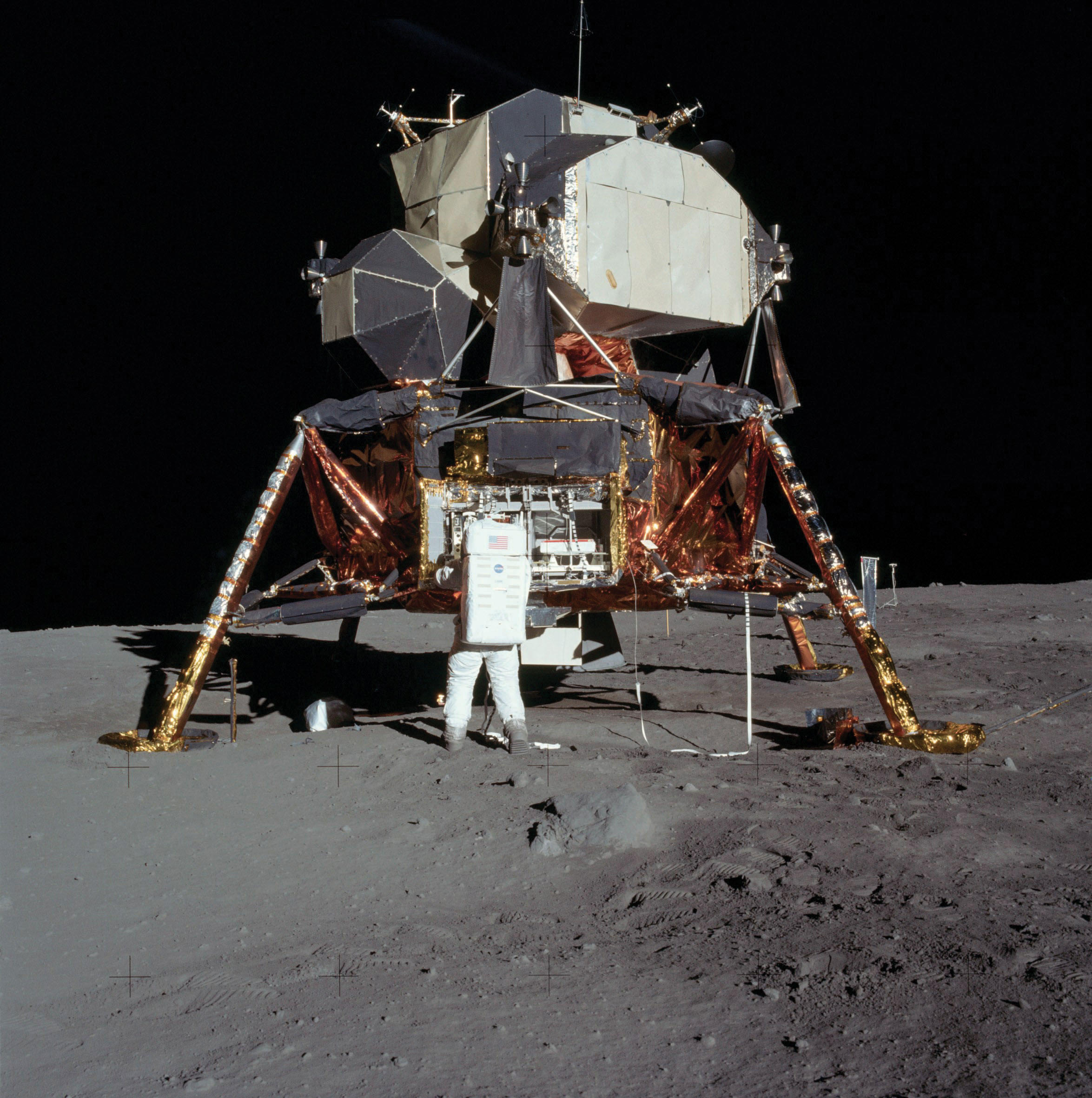
Americans landed on the moon eight years after President Kennedy set a moon landing as a key goal for the United States.
Image courtesy of NASA Apollo Archive, http://upload.wikimedia.org/wikipedia/commons/8/8b/5927_NASA.jpg.
The period after an important goal is reached is often overlooked but is critical. Will an organization rest on its laurels or will it take on new challenges? The US space program again provides an illustrative example. At the time of the first moon landing, Time magazine asked the leader of the team that built the moon rockets about the future of space exploration. “Given the same energy and dedication that took them to the moon,” said Wernher von Braun, “Americans could land on Mars as early as 1982.”The Moon: Next, Mars and beyond. 1969, July 15. Time. Retrieved from http://www.time.com/time/magazine/article/0,9171,901107,00.html No new goal involving human visits to Mars was embraced, however, and human exploration of space was de-emphasized in favor of robotic adventurers. Nearly three decades after von Braun’s proposed timeline for reaching Mars expired, President Barack Obama set in 2010 a goal of creating by 2025 a new space vehicle capable of taking humans beyond the moon and into deep space. This would be followed in the mid-2030s by a flight to orbit Mars as a prelude to landing on Mars.Amos, J. 2010, April 15. Obama sets Mars goal for America. BBC News. Retrieved from http://news.bbc.co.uk/2/hi/8623691.stm Time will tell whether these goals inspire the scientific community and the country in general (Figure 2.4 "Be SMART: Vision, Mission, Goals, and You").
Organizational performanceHow well an organization is doing at reaching its vision, mission, and goals. refers to how well an organization is doing to reach its vision, mission, and goals. Assessing organizational performance is a vital aspect of strategic management. Executives must know how well their organizations are performing to figure out what strategic changes, if any, to make. Performance is a very complex concept, however, and a lot of attention needs to be paid to how it is assessed.
Two important considerations are (1) performance measures and (2) performance referents (Figure 2.5 "How Organizations and Individuals Can Use Financial Performance Measures and Referents"). A performance measureA metric such as profits, stock price, and sales along which organizations can be gauged. is a metric along which organizations can be gauged. Most executives examine measures such as profits, stock price, and sales in an attempt to better understand how well their organizations are competing in the market. But these measures provide just a glimpse of organizational performance. Performance referents are also needed to assess whether an organization is doing well. A performance referentA benchmark such as the industry average that is used to make sense of an organization’s standing along a performance measure. is a benchmark used to make sense of an organization’s standing along a performance measure. Suppose, for example, that a firm has a profit margin of 20 percent in 2011. This sounds great on the surface. But suppose that the firm’s profit margin in 2010 was 35 percent and that the average profit margin across all firms in the industry for 2011 was 40 percent. Viewed relative to these two referents, the firm’s 2011 performance is cause for concern.
Using a variety of performance measures and referents is valuable because different measures and referents provide different information about an organization’s functioning. The parable of the blind men and the elephant—popularized in Western cultures through a poem by John Godfrey Saxe in the nineteenth century—is useful for understanding the complexity associated with measuring organizational performance. As the story goes, six blind men set out to “see” what an elephant was like. The first man touched the elephant’s side and believed the beast to be like a great wall. The second felt the tusks and thought elephants must be like spears. Feeling the trunk, the third man thought it was a type of snake. Feeling a limb, the fourth man thought it was like a tree trunk. The fifth, examining an ear, thought it was like a fan. The sixth, touching the tail, thought it was like a rope. If the men failed to communicate their different impressions they would have all been partially right but wrong about what ultimately mattered.
Figure 2.5 How Organizations and Individuals Can Use Financial Performance Measures and Referents
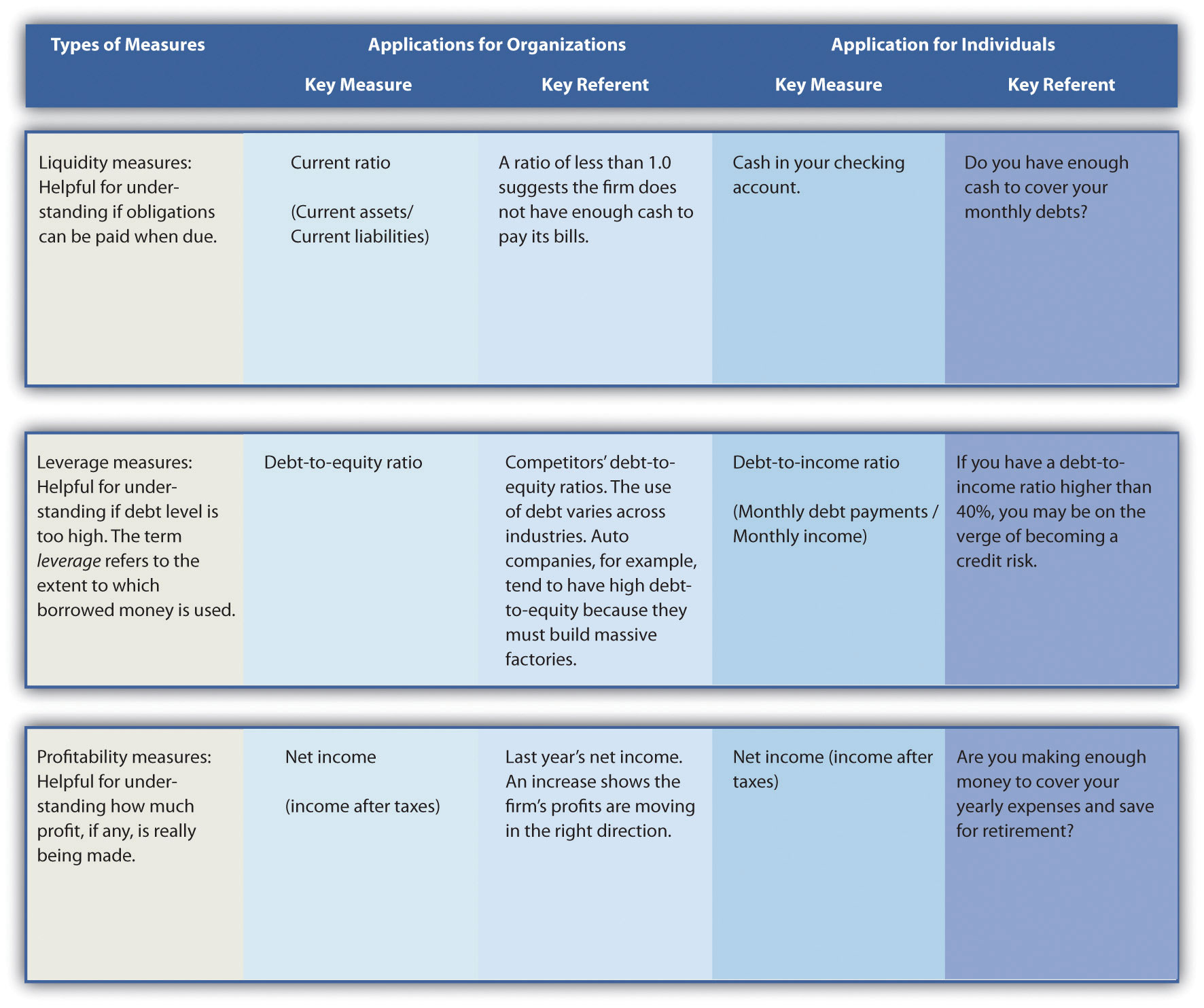
This story parallels the challenge involved in understanding the multidimensional nature of organization performance because different measures and referents may tell a different story about the organization’s performance. For example, the Fortune 500 lists the largest US firms in terms of sales. These firms are generally not the strongest performers in terms of growth in stock price, however, in part because they are so big that making major improvements is difficult. During the late 1990s, a number of Internet-centered businesses enjoyed exceptional growth in sales and stock price but reported losses rather than profits. Many investors in these firms who simply fixated on a single performance measure—sales growth—absorbed heavy losses when the stock market’s attention turned to profits and the stock prices of these firms plummeted.
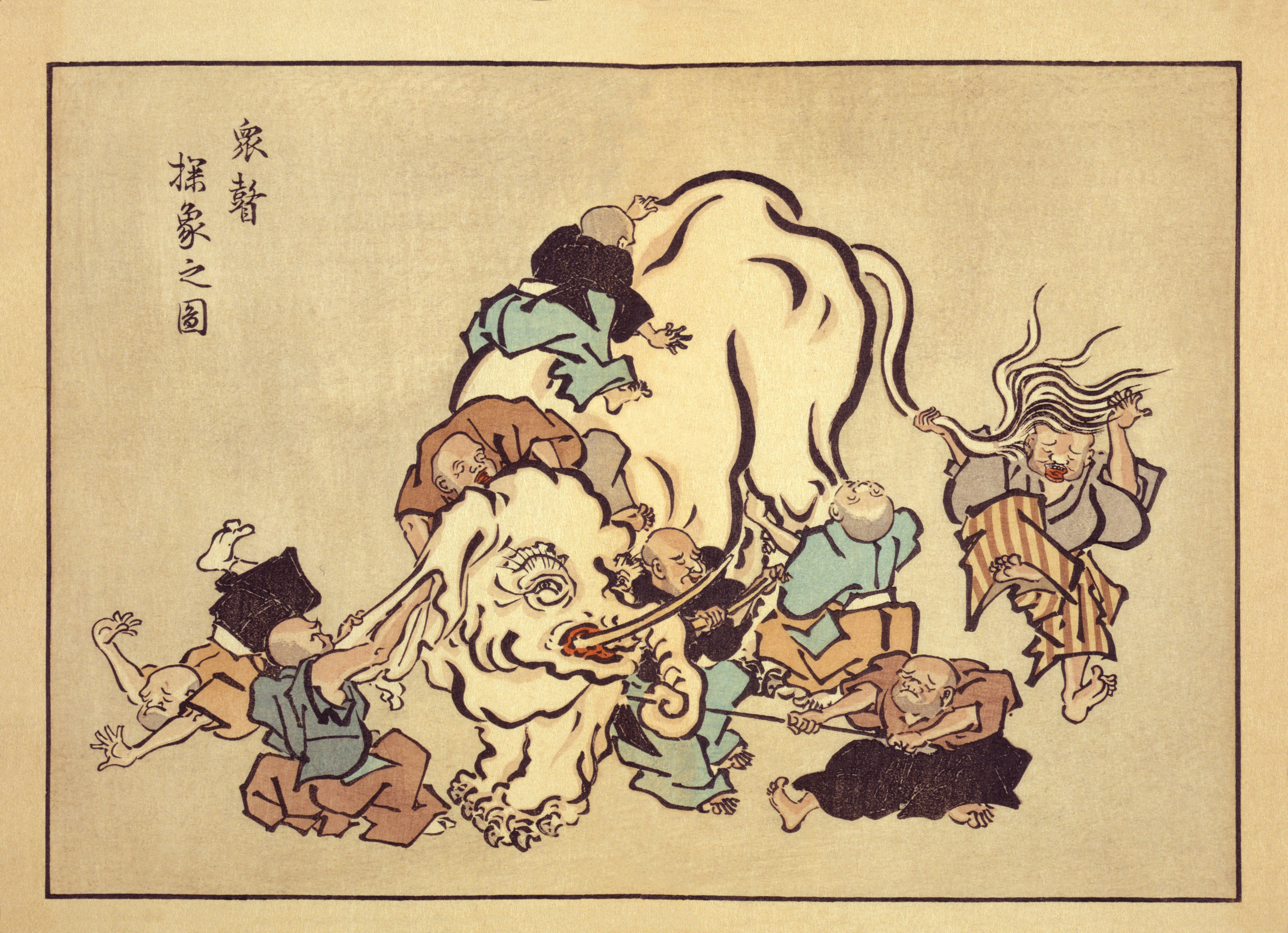
The story of the blind men and the elephant provides a metaphor for understanding the complexities of measuring organizational performance.
Image courtesy of Hanabusa Itcho, http://en.wikipedia.org/wiki/File:Blind_monks_examining_an_elephant.jpg.
The number of performance measures and referents that are relevant for understanding an organization’s performance can be overwhelming, however. For example, a study of what performance metrics were used within restaurant organizations’ annual reports found that 788 different combinations of measures and referents were used within this one industry in a single year.Short, J. C., & Palmer, T. B. 2003. Organizational performance referents: An empirical examination of their content and influences. Organizational Behavior and Human Decision Processes, 90, 209–224. Thus executives need to choose a rich yet limited set of performance measures and referents to focus on.
To organize an organization’s performance measures, Professor Robert Kaplan and Professor David Norton of Harvard University developed a tool called the balanced scorecardAn approach to assessing performance that targets managers’ attention on four areas: (1) financial, (2) customer, (3) internal business process, and (4) learning and growth.. Using the scorecard helps managers resist the temptation to fixate on financial measures and instead monitor a diverse set of important measures (Figure 2.6 "Beyond Profits: Measuring Performance Using the Balanced Scorecard"). Indeed, the idea behind the framework is to provide a “balance” between financial measures and other measures that are important for understanding organizational activities that lead to sustained, long-term performance. The balanced scorecard recommends that managers gain an overview of the organization’s performance by tracking a small number of key measures that collectively reflect four dimensions: (1) financial, (2) customer, (3) internal business process, and (4) learning and growth.Kaplan, R. S., & Norton, D. 1992, February. The balanced scorecard: Measures that drive performance. Harvard Business Review, 70–79.
Financial measures of performance relate to organizational effectiveness and profits. Examples include financial ratios such as return on assets, return on equity, and return on investment. Other common financial measures include profits and stock price. Such measures help answer the key question “How do we look to shareholders?”
Financial performance measures are commonly articulated and emphasized within an organization’s annual report to shareholders. To provide context, such measures should be objective and be coupled with meaningful referents, such as the firm’s past performance. For example, Starbucks’s 2009 annual report highlights the firm’s performance in terms of net revenue, operating income, and cash flow over a five-year period.
Customer measures of performance relate to customer attraction, satisfaction, and retention. These measures provide insight to the key question “How do customers see us?” Examples might include the number of new customers and the percentage of repeat customers.
Starbucks realizes the importance of repeat customers and has taken a number of steps to satisfy and to attract regular visitors to their stores. For example, Starbucks rewards regular customers with free drinks and offers all customers free Wi-Fi access.Miller, C. 2010, June 15. Aiming at rivals, Starbucks will offer free Wi-Fi. New York Times. Section B, p. 1. Starbucks also encourages repeat visits by providing cards with codes for free iTunes downloads. The featured songs change regularly, encouraging frequent repeat visits.
Internal business process measures of performance relate to organizational efficiency. These measures help answer the key question “What must we excel at?” Examples include the time it takes to manufacture the organization’s good or deliver a service. The time it takes to create a new product and bring it to market is another example of this type of measure.
Organizations such as Starbucks realize the importance of such efficiency measures for the long-term success of its organization, and Starbucks carefully examines its processes with the goal of decreasing order fulfillment time. In one recent example, Starbucks efficiency experts challenged their employees to assemble a Mr. Potato Head to understand how work could be done more quickly.Jargon, J. 2009, August 4. Latest Starbucks buzzword: “Lean” Japanese techniques. Wall Street Journal, p. A1. The aim of this exercise was to help Starbucks employees in general match the speed of the firm’s high performers, who boast an average time per order of twenty-five seconds.
Learning and growth measures of performance relate to the future. Such measures provide insight to tell the organization, “Can we continue to improve and create value?” Learning and growth measures focus on innovation and proceed with an understanding that strategies change over time. Consequently, developing new ways to add value will be needed as the organization continues to adapt to an evolving environment. An example of a learning and growth measure is the number of new skills learned by employees every year.
One way Starbucks encourages its employees to learn skills that may benefit both the firm and individuals in the future is through its tuition reimbursement program. Employees who have worked with Starbucks for more than a year are eligible. Starbucks hopes that the knowledge acquired while earning a college degree might provide employees with the skills needed to develop innovations that will benefit the company in the future. Another benefit of this program is that it helps Starbucks reward and retain high-achieving employees.
Ralph Waldo Emerson once noted, “Doing well is the result of doing good. That’s what capitalism is all about.” While the balanced scorecard provides a popular framework to help executives understand an organization’s performance, other frameworks highlight areas such as social responsibility. One such framework, the triple bottom lineAn approach to assessing performance that emphasizes the concerns of people (social responsibility) and the planet (environmental sustainability) in addition to profit., emphasizes the three Ps of people (making sure that the actions of the organization are socially responsible), the planet (making sure organizations act in a way that promotes environmental sustainability), and traditional organization profits. This notion was introduced in the early 1980s but did not attract much attention until the late 1990s.

The triple bottom line emphasizes the three Ps of people (social concerns), planet (environmental concerns), and profits (economic concerns).
Reproduced with permission from [citation redacted per publisher request].
In the case of Starbucks, the firm has made clear the importance it attaches to the planet by creating an environmental mission statement (“Starbucks is committed to a role of environmental leadership in all facets of our business”) in addition to its overall mission.Our Starbucks mission statement. Retrieved on March 31, 2011, from http://www.starbucks.com/about-us/company-information/mission-statement. Accessed March 31, 2011. In terms of the “people” dimension of the triple bottom line, Starbucks strives to purchase coffee beans harvested by farmers who work under humane conditions and are paid reasonable wages. The firm works to be profitable as well, of course.
The nice thing about being a celebrity is that when you bore people, they think it’s their fault.
Henry Kissinger, former US Secretary of State
The word celebrity quickly brings to mind actors, sports stars, and musicians. Some CEOs, such as Bill Gates, Oprah Winfrey, Martha Stewart, and Donald Trump, also achieve celebrity status. Celebrity CEOs are not a new phenomenon. In the early twentieth century, industrial barons such as Henry Ford, John D. Rockefeller, and Cornelius Vanderbilt were household names. However, in the current era of mass and instant media, celebrity CEOs have become more prevalent and visible (Figure 2.7 "CEO").This section of the chapter is adapted from Ketchen, D., Adams, G., & Shook, C. 2008. Understanding and managing CEO celebrity. Business Horizons, 51(6), 529–534.
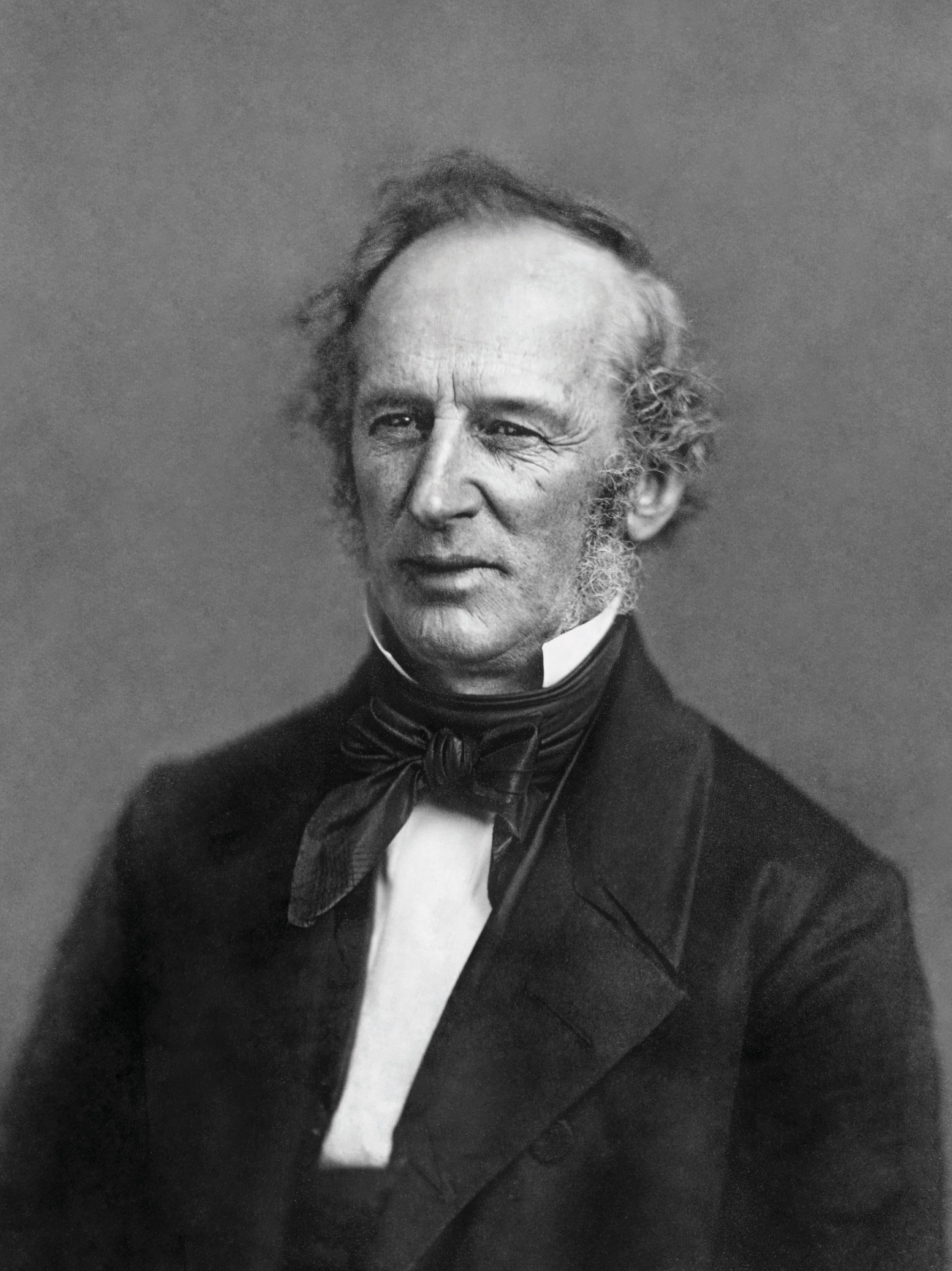
Cornelius Vanderbilt was one of the earliest celebrity CEOs; Vanderbilt University serves as his legacy.
Image courtesy of Mathew Brady and Michel Vuijlsteke, http://en.wikipedia.org/wiki/File:Cornelius_Vanderbilt_Daguerrotype2.jpg.
Both benefits and costs are associated with CEO celebrity. As the quote from Henry Kissinger suggests, celebrity confers a mystique and reverence that can be leveraged in a variety of ways. CEO celebrity can serve as an intangible asset for the CEO’s firm and may increase opportunities available to the firm. Hiring or developing a celebrity CEO may increase stock price, enhance a firm’s image, and improve the morale of employees and other stakeholders. However, employing a celebrity CEO also entails risks for an organization. Increased attention to the firm via the celebrity CEO means any gaps between actual and expected firm performance are magnified. Further, if a celebrity CEO acts in an unethical or illegal manner, chances are that the CEO’s firm will receive much more media attention than will other firms with similar problems.Ranft, A. L., Zinko, R., Ferris, G. R., & Buckley, M. R. 2006. Marketing the image of management: The costs and benefits of CEO reputation. Organizational Dynamics, 35(3), 279–290.
There are also personal benefits and risks associated with celebrity for the CEO. Celebrity CEOs tend to receive higher compensation and job perks than their colleagues. Celebrity CEOs are likely to enjoy increased prestige power, which facilitates invitations to serve on the boards of directors of other firms and creates opportunities to network with other “managerial elites.” Celebrity also can provide CEOs with a “benefit of the doubt” effect that protects against quick sanctions for downturns in firm performance and stock price. However, celebrity also creates potential costs for individuals. Celebrity CEOs face larger and more lasting reputation erosion if their job performance and behavior is inconsistent with their celebrity image. Celebrity CEOs face increased personal media scrutiny, and their friends and family must often endure increased attention into their personal and public lives. Accordingly, wise CEOs will attempt to understand and manage their celebrity status.Wade, J. B., Porac, J. F., Pollock, T. G., & Graffin, S. D. 2008. Star CEOs: Benefit or burden? Organizational Dynamics, 37(2), 203–210.
IconsCEOs who possess both fame and strong reputations. are CEOs possessing both fame and strong reputations. The icon CEO combines style and substance in the execution of his or her job responsibilities. Mary Kay Ash, Richard Branson, Bill Gates, and Warren Buffett are good examples of icons. The late Mary Kay Ash founded Mary Kay Cosmetics Corporation. The firm’s great success and Ash’s unconventional motivational methods, such as rewarding sales representatives with pink Cadillacs, made her famous. Partly because she emphasized helping other women succeed and ethical business practices, Mary Kay Ash also had a very positive reputation. Richard Branson has created an empire with more than four hundred companies, including Virgin Atlantic Airways and Virgin Records. Branson’s celebrity status led him to star in his own reality-based show. He has also appeared on television series such as Baywatch and Friends, in addition to several cameo appearances in major motion pictures. Bill Gates, founder and former CEO of Microsoft, also has fame and a largely positive reputation. Gates is a proverbial “household name” in the tradition of Ford, Rockefeller, and Vanderbilt. He also is routinely listed among Time magazine’s “100 Most Influential People” and has received “rock star” receptions in India and Vietnam in recent years.
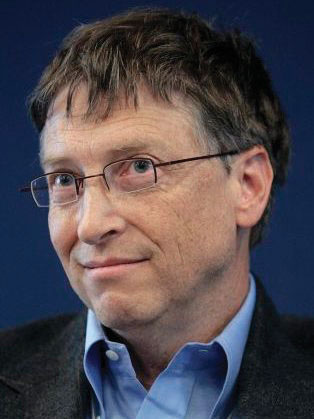
Former Microsoft CEO Bill Gates exemplifies a CEO who has reached icon status.
Image courtesy of World Economic Forum, http://en.wikipedia.org/wiki/File:Bill_Gates_in_WEF_,2007.jpg.
Warren Buffett is perhaps the best-known executive in the United States. As CEO of Berkshire Hathaway, he has accumulated wealth estimated at $62 billion and was the richest person in the world as of March 2008. Buffett’s business insights command a level of respect that is perhaps unrivaled. Many in the investment and policymaking communities pay careful attention to his investment choices and his commentary on economic conditions. Despite Buffett’s immense wealth and success, his reputation centers on humility and generosity. Buffett avoids the glitz of Wall Street and has lived for fifty years in a house he bought in Omaha, Nebraska, for $31,000. Meanwhile, his 2006 donation of approximately $30 billion to the Bill and Melinda Gates Foundation was the largest charitable gift in history.
CEOs who display high levels of relative fame but low levels of reputation are in the group called scoundrelsCEOs who display high levels of relative fame but low levels of reputation.. These CEOs are well known but vilified. The late Leona Helmsley was a prototypical scoundrel. Leona Helmsley’s life was a classic rags-to-riches story. Born to immigrant parents, Helmsley became a billionaire through her work as the head of an extensive hotel and real estate empire. While certainly famous, her reputation was anything but positive, as reflected by her nickname: the Queen of Mean. During Helmsley’s trial for tax fraud, her housekeeper quoted her as proclaiming, “We don’t pay taxes. Only the little people pay taxes.” Following twenty-one months in jail, Helmsley was required to perform 750 hours of community service. One hundred fifty hours were added to this sentence after it was discovered that employees had performed some of her service hours. Helmsley’s apparent arrogance, combined with her cruelty to employees and her reputation as the ultimate workplace bully, cemented her position as a scoundrel.
The corporate governance scandals of the early 2000s revealed several CEOs as scoundrels. Perhaps the best known were Kenneth Lay and Dennis Kozlowski. Both men rose to prominence as their firms’ success and stock prices soared but were undone by dubious activities. Lay was once revered as the son of a poor minister who founded Enron and built it into a giant in the energy business. In 2001, however, he became the face of corporate abuses in the United States after Enron’s collapse led to scenes, captured on television, of employees left jobless and with retirement accounts full of worthless Enron stock. Lay was convicted of fraud in 2006 but died before sentencing.
Also born to a poor family, Kozlowski started at Tyco as an accountant and worked his way up to the executive suite. In May 2001, a BusinessWeek cover story lauded Kozlowski as “the most aggressive CEO” in the country and detailed his strategy for building Tyco into the next General Electric by using acquisitions to gain the first or second position in all the industries in which it competed. By 2002, Kozlowski’s reputation was in jeopardy. He was indicted for avoiding more than $1 million in sales taxes on art purchases. Media stories described in detail a $2 million birthday party Kozlowski threw for his wife (billing half of it to Tyco as a company function), a $19 million apartment Tyco purchased for him, and $11 million worth of furnishings for the apartment (including an infamous $6,000 shower curtain). Accusations that Kozlowski and another Tyco executive stole hundreds of millions of dollars from the firm ultimately led to a prison sentence of eight to twenty-five years.
Hidden gemsCEOs who lack fame but possess positive reputations. are CEOs who lack fame but possess positive reputations. These CEOs toil in relative obscurity while leading their firms to success. Their skill as executives is known mainly by those in their own firm and by their competitors. In many cases, the firm has some renown due to its success, but the CEO stays unknown. For example, consider the case of Anne Mulcahy. Mulcahy, CEO of Xerox, started her career at Xerox as a copier salesperson. Despite building an excellent reputation by rescuing Xerox from near bankruptcy, Mulcahy eschews fame and publicity. While being known for successfully leading Xerox by example and being willing to fly anywhere to meet a customer, she avoids stock analysts and reporters.
Silent killersCEOs who are overlooked and ignored sources of harm to their firms. are the fourth and final group of CEOs. These CEOs are overlooked and ignored sources of harm to their firms. While scoundrels are closely monitored and scrutinized by the media, it may be too late before the poor ethics or incompetence of the silent killers is detected. In this sense, silent killers are sometimes worse than scoundrels. One example of a silent killer is Harding Lawrence, former CEO of defunct Braniff International. Lawrence initiated a massive expansion of the airline following industry deregulation in the late 1970s. The result was a bloated firm, ill-equipped to survive the extremely competitive setting that evolved in the early 1980s. Howard Putnam, the CEO of a small regional carrier named Southwest Airlines, was hired in a failed effort to save the company. By the time Braniff went bankrupt, Putnam was left to explain its demise, and the name of the main culprit was all but forgotten. Ironically, had Putnam declined the opportunity to try to save Braniff, perhaps he and not Herb Kelleher would have become an icon at the helm of Southwest.
Iron Man
Has Tony Stark gone crazy? This was the question that many stakeholders of Stark Industries were asking themselves in the 2008 blockbuster Iron Man. Tony Stark, CEO of Stark Industries, stunned his shareholders, employees, and the world when he announced that he was changing Stark Industries’ mission from being one of the world’s leading weapons manufacturers to being a socially responsible, clean energy producer. Following his announcement, Stark faced fierce opposition from his board of directors, employees, the media, and clients such as the US military. The changes at Stark Industries attracted tremendous attention in part because of the glamorous Stark’s status as a celebrity CEO. Initially, Stark is seen by the public as a scoundrel that pays little attention to the social impact his company makes. After shifting the direction of Stark Industries, however, Stark is viewed as an icon that is just as attentive to the social performance of the company as he is to its financial performance. Iron Man illustrates that while changing elements such as firm mission and CEO status is difficult, it is not impossible.
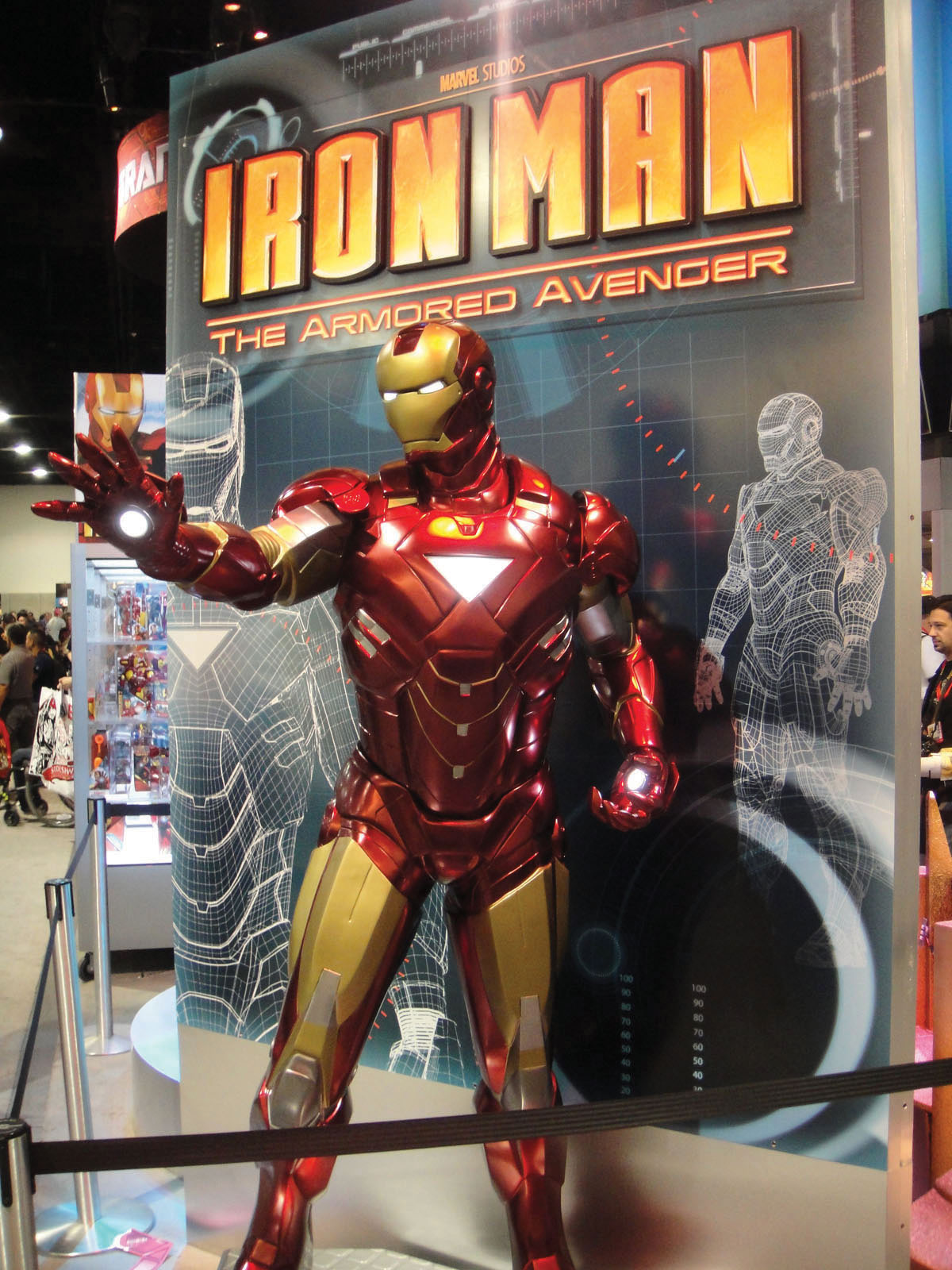
Iron Man: The Greatest Creation of Fictional Celebrity CEO Tony Stark
Image courtesy of Pop Culture Geek, http://www.flickr.com/photos/popculturegeek/4858995531.
Anything I say or do is now at risk of showing up on the front page of a national daily newspaper and therefore, I need to be much more conscious about the implications of everything that I say or do in all situations.
John Mackey, CEO of Whole Foods Market
Achieving the level of success that brings about celebrity is seldom a completely smooth process. Even well-regarded celebrity CEOs seldom have totally untarnished reputations. Bill Gates has been portrayed as a ruthless and devious genius, for example, while General Electric CEO Jack Welch was attacked in media outlets for an extramarital affair.
One of the more interesting recent cases of a tarnished reputation centers on John Mackey, founder and CEO of Whole Foods Market. His strategy of offering organic food and high levels of service allowed Whole Foods to carve out a profitable and growing niche in an industry whose overall margins have been squeezed as Walmart’s Supercenters have gained market share. Under Mackey’s leadership, Whole Food’s stock price tripled from 2001 to 2006. Mackey’s efforts to make food supplies healthier and his teamwork-centered management approach attracted publicity, and he appeared headed for icon status.
But in 2007 Mackey and Whole Foods were embarrassed by the revelation that Mackey had been anonymously posting negative information about a rival, Wild Oats, online. Through his online persona “rahodeb” (a scrambling of his wife’s name), Mackey asserted that Wild Oats’ stock was overpriced and that the firm was headed toward bankruptcy. This was viewed by some observers as a possible effort to manipulate Wild Oats’ stock price prior to a proposed acquisition by Whole Foods. Meanwhile, in e-mails to other Whole Foods executives, Mackey noted that the acquisition of Wild Oats could allow them to avoid “nasty price wars.” This caught the eye of Federal Trade Commission (FTC) regulators who were concerned about the antitrust implications of the acquisition.
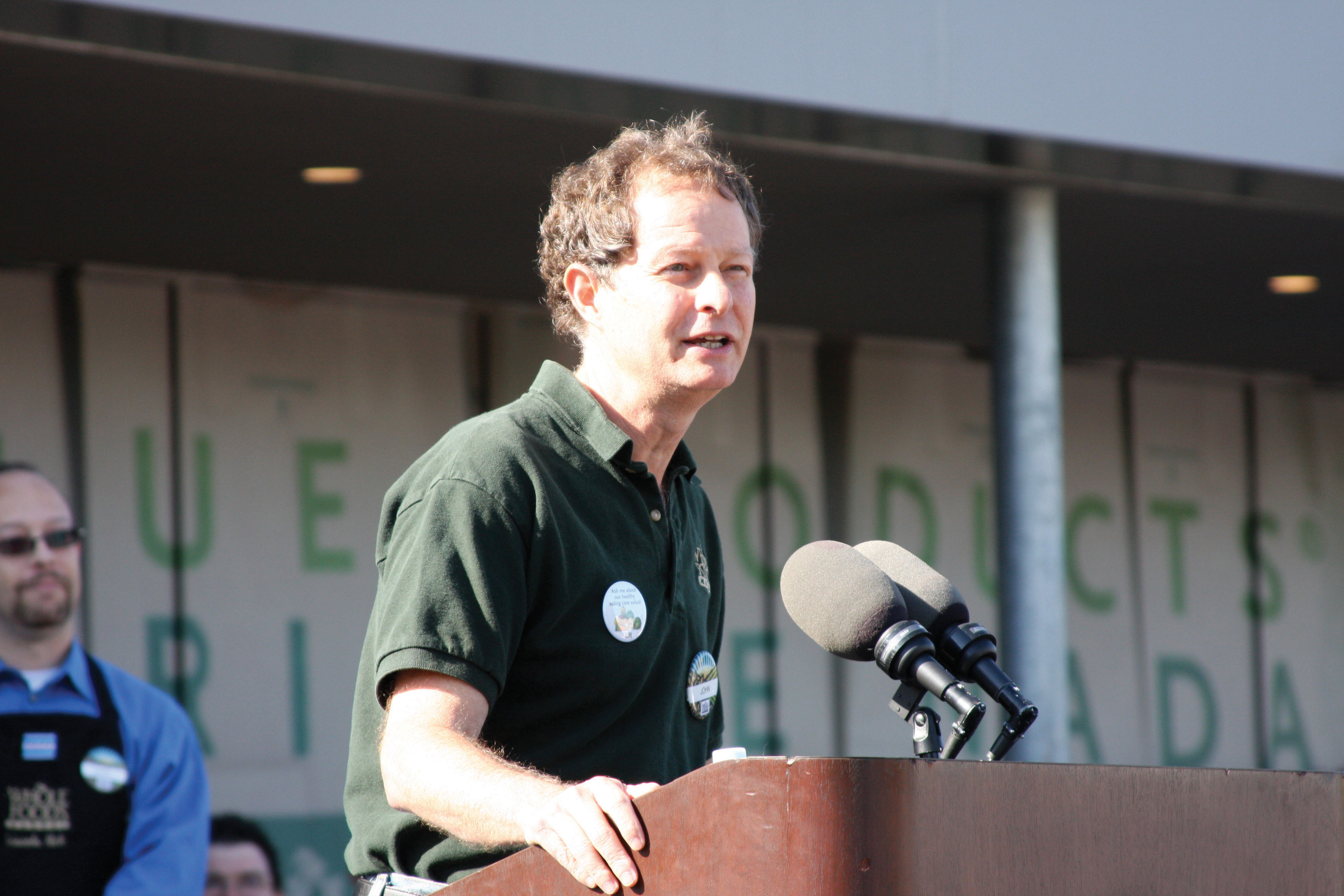
Whole Foods CEO John Mackey’s celebrity status was amplified when it was revealed that he had posted negative information online about competitor Wild Oats.
Image courtesy of Joe M500, http://en.wikipedia.org/wiki/File:John_Mackey,_of_Whole_Foods_in_2009.jpg.
What should a CEO do when his or her reputation takes a hit? As the old saying goes, honesty is the best policy. An example is offered by David Neeleman, founder and CEO of JetBlue. The reputations of JetBlue and Neeleman took a severe blow after a widely reported February 2007 debacle in which travelers were stranded in airplanes for excessive periods of time during a busy holiday weekend. Neeleman took a giant step toward restoring both his and JetBlue’s reputation by issuing a public, heartfelt apology. He not only issued a written apology to customers but also bought full-page advertisements in newspapers, posted a video apology online, and created a new “bill of rights” for JetBlue customers.
Mackey apologized for his actions via his blog in 2008. As part of this apology, Mackey acknowledged that he had failed to recognize how expectations change when one becomes a celebrity. Mackey noted that when Whole Foods was a smaller company, “I was seldom interviewed and few people knew or cared who I was. I wasn’t a public figure and had no desire to become one.” As his company grew, however, Mackey became subject to more scrutiny. As Mackey put it, “At some point in the past 10 years I went from being a relatively unknown person to becoming a public figure. I regret not having the wisdom to recognize this fact until very recently.”John Mackey’s blog. 2008, May 21. Re: Apology. Retrieved from http://www2.wholefoodsmarket.com/blogs/jmackey/2008/05/21/back-to-blogging/#more-26. A big part of managing celebrity status is realizing that one is in fact a celebrity.
When asked to think of an entrepreneur, people typically offer examples such as Howard Schultz, Estée Lauder, and Michael Dell—individuals who have started their own successful businesses from the bottom up that generated a lasting impact on society. But entrepreneurial thinking and doing are not limited to those who begin in their garage with a new idea, financed by family members or personal savings. Some people in large organizations are filled with passion for a new idea, spend their time championing a new product or service, work with key players in the organization to build a constituency, and then find ways to acquire the needed resources to bring the idea to fruition. Thinking and behaving entrepreneurially can help a person’s career too. Some enterprising individuals successfully navigate through the environments of their respective organizations and maximize their own career prospects by identifying and seizing new opportunities (Figure 2.8 "Understanding Entrepreneurial Orientation").This section is adapted from Certo, S. T., Moss, T. W., & Short, J. C. 2009. Entrepreneurial orientation: An applied perspective. Business Horizons, 52, 319–324.
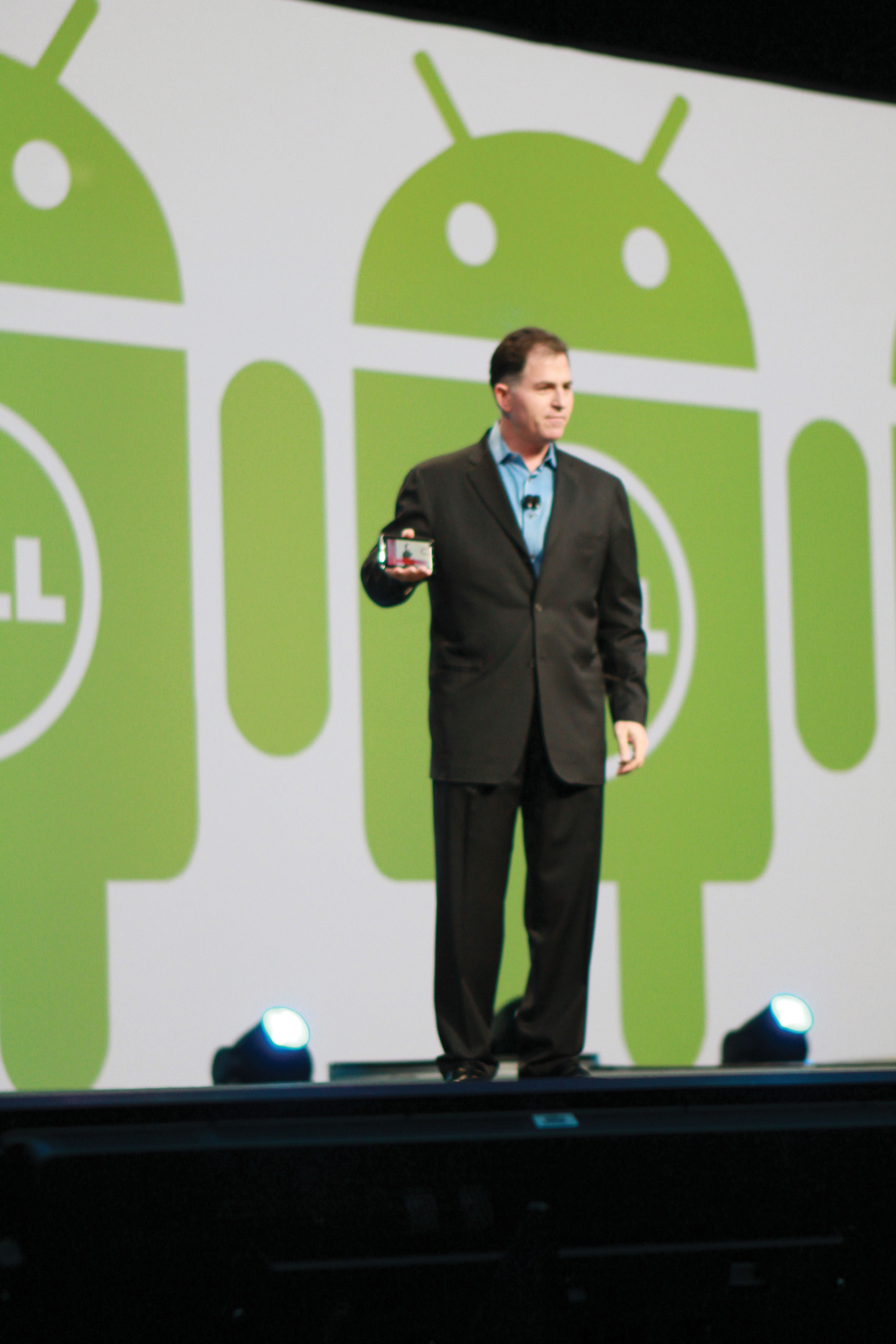
As a college student, Michael Dell demonstrated an entrepreneurial orientation by starting a computer-upgrading business in his dorm room. He later founded Dell Inc.
Image courtesy of Ilan Costica, http://en.wikipedia.org/wiki/File:Michael_Dell_at_Oracle_OpenWorld.JPG.
In the 1730s, Richard Cantillon used the French term entrepreneur, or literally “undertaker,” to refer to those who undertake self-employment while also accepting an uncertain return. In subsequent years, entrepreneurs have also been referred to as innovators of new ideas (Thomas Edison), individuals who find and promote new combinations of factors of production (Bill Gates’ bundling of Microsoft’s products), and those who exploit opportunistic ideas to expand small enterprises (Mark Zuckerberg at Facebook). The common elements of these conceptions of entrepreneurs are that they do something new and that some individuals can make something out of opportunities that others cannot.
Entrepreneurial orientation (EO)The processes, practices, and decision-making styles of organizations that act entrepreneurially. is a key concept when executives are crafting strategies in the hopes of doing something new and exploiting opportunities that other organizations cannot exploit. EO refers to the processes, practices, and decision-making styles of organizations that act entrepreneurially.Lumpkin, G. T., & Dess, G. G. 1996. Clarifying the entrepreneurial orientation construct and linking it to performance. Academy of Management Review, 21, 135–172. Any organization’s level of EO can be understood by examining how it stacks up relative to five dimensions: (1) autonomy, (2) competitive aggressiveness, (3) innovativeness, (4) proactiveness, (5) and risk taking. These dimensions are also relevant to individuals.
AutonomyWhether an individual or team of individuals within an organization has the freedom to develop an entrepreneurial idea and then see it through to completion. refers to whether an individual or team of individuals within an organization has the freedom to develop an entrepreneurial idea and then see it through to completion. In an organization that offers high autonomy, people are offered the independence required to bring a new idea to fruition, unfettered by the shackles of corporate bureaucracy. When individuals and teams are unhindered by organizational traditions and norms, they are able to more effectively investigate and champion new ideas.
Some large organizations promote autonomy by empowering a division to make its own decisions, set its own objectives, and manage its own budgets. One example is Sony’s PlayStation group, which was created by chief operating officer (COO) Ken Kutaragi, largely independent of the Sony bureaucracy. In time, the PlayStation business was responsible for nearly all Sony’s net profit. Because of the success generated by the autonomous PlayStation group, Kutaragi later was tapped to transform Sony’s core consumer electronics business into a PlayStation clone. In some cases, an autonomous unit eventually becomes completely distinct from the parent company, such as when Motorola spun off its successful semiconductor business to create Freescale.
Competitive aggressivenessThe tendency to intensely and directly challenge competitors. is the tendency to intensely and directly challenge competitors rather than trying to avoid them. Aggressive moves can include price-cutting and increasing spending on marketing, quality, and production capacity. An example of competitive aggressiveness can be found in Ben & Jerry’s marketing campaigns in the mid-1980s, when Pillsbury’s Häagen-Dazs attempted to limit distribution of Ben & Jerry’s products. In response, Ben & Jerry’s launched their “What’s the Doughboy Afraid Of?” advertising campaign to challenge Pillsbury’s actions. This marketing action was coupled with a series of lawsuits—Ben & Jerry’s was competitively aggressive in both the marketplace and the courtroom.
Although aggressive moves helped Ben & Jerry’s, too much aggressiveness can undermine an organization’s success. A small firm that attacks larger rivals, for example, may find itself on the losing end of a price war. Establishing a reputation for competitive aggressiveness can damage a firm’s chances of being invited to join collaborative efforts such as joint ventures and alliances. In some industries, such as the biotech industry, collaboration is vital because no single firm has the knowledge and resources needed to develop and deliver new products. Executives thus must be wary of taking competitive actions that destroy opportunities for future collaborating.
InnovativenessThe tendency to pursue creativity and experimentation. is the tendency to pursue creativity and experimentation. Some innovations build on existing skills to create incremental improvements, while more radical innovations require brand-new skills and may make existing skills obsolete. Either way, innovativeness is aimed at developing new products, services, and processes. Those organizations that are successful in their innovation efforts tend to enjoy stronger performance than those that do not.
Known for efficient service, FedEx has introduced its Smart Package, which allows both shippers and recipients to monitor package location, temperature, and humidity. This type of innovation is a welcome addition to FedEx’s lineup for those in the business of shipping delicate goods, such as human organs. How do firms generate these types of new ideas that meet customers’ complex needs? Perennial innovators 3M and Google have found a few possible answers. 3M sends nine thousand of its technical personnel in thirty-four countries into customers’ workplaces to experience firsthand the kinds of problems customers encounter each day. Google’s two most popular features of its Gmail, thread sorting and unlimited e-mail archiving, were first suggested by an engineer who was fed up with his own e-mail woes. Both firms allow employees to use a portion of their work time on projects of their own choosing with the goal of creating new innovations for the company. This latter example illustrates how multiple EO dimensions—in this case, autonomy and innovativeness—can reinforce one another.
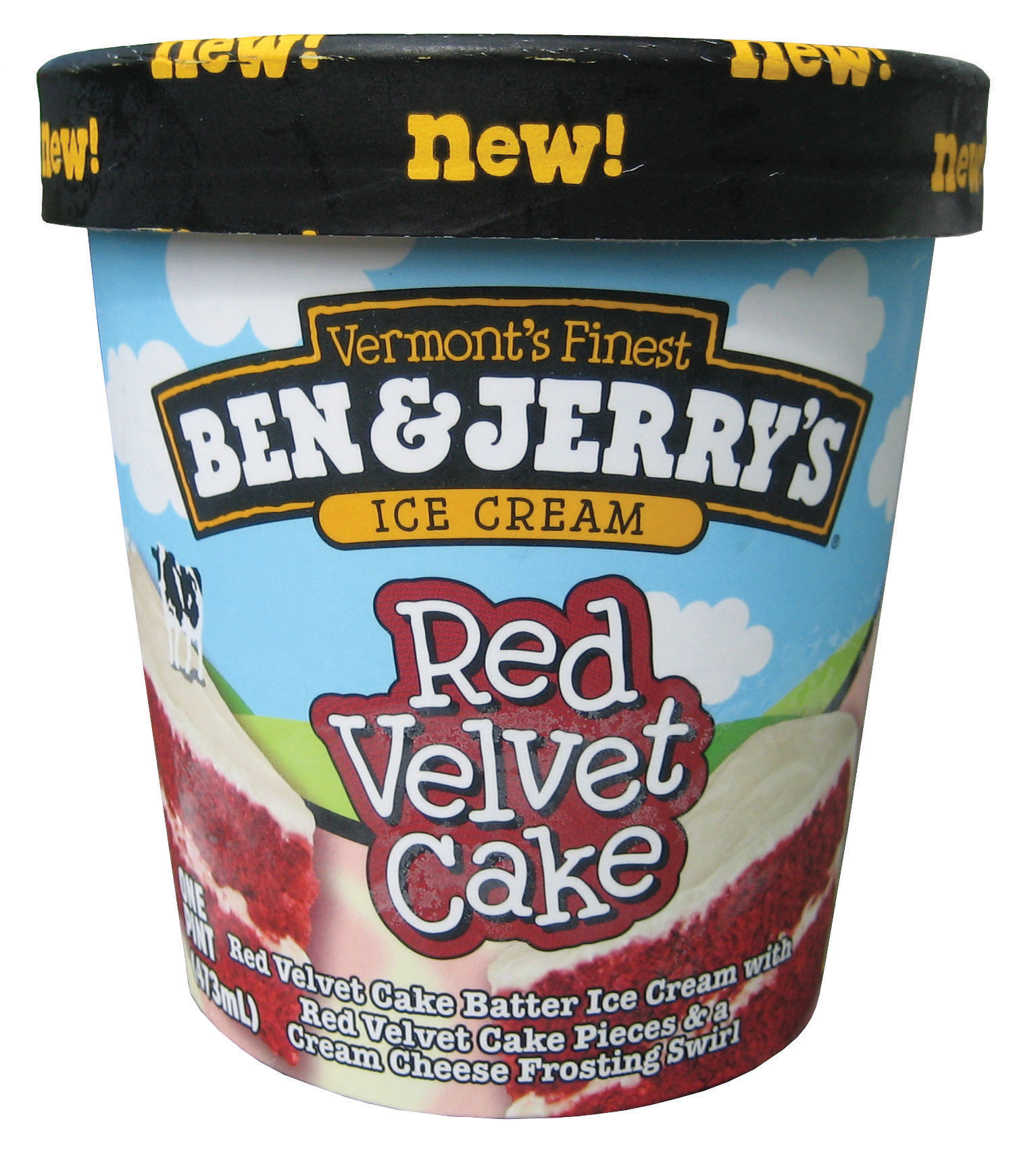
Ben & Jerry’s displays innovativeness by developing a series of offbeat and creative flavors over time.
Image courtesy of theimpulsivebuy, http://www.flickr.com/photos/theimpulsivebuy/5613901887/sizes/m/in/photostream.
ProactivenessThe tendency to anticipate and act on future needs. is the tendency to anticipate and act on future needs rather than reacting to events after they unfold. A proactive organization is one that adopts an opportunity-seeking perspective. Such organizations act in advance of shifting market demand and are often either the first to enter new markets or “fast followers” that improve on the initial efforts of first movers.
Consider Proactive Communications, an aptly named small firm in Killeen, Texas. From its beginnings in 2001, this firm has provided communications in hostile environments, such as Iraq and areas impacted by Hurricane Katrina. Being proactive in this case means being willing to don a military helmet or sleep outdoors—activities often avoided by other telecommunications firms. By embracing opportunities that others fear, Proactive’s executives have carved out a lucrative niche in a world that is technologically, environmentally, and politically turbulent.Choi, A. S. 2008, April 16. PCI builds telecommunications in Iraq. Bloomberg Businessweek. Retrieved from http://www.businessweek.com/magazine/content/08_64/s0804065916656.htm.
Risk takingThe tendency to engage in bold rather than cautious actions. refers to the tendency to engage in bold rather than cautious actions. Starbucks, for example, made a risky move in 2009 when it introduced a new instant coffee called VIA Ready Brew. Instant coffee has long been viewed by many coffee drinkers as a bland drink, but Starbucks decided that the opportunity to distribute its product in a different format was worth the risk of associating its brand name with instant coffee.
Although a common belief about entrepreneurs is that they are chronic risk takers, research suggests that entrepreneurs do not perceive their actions as risky, and most take action only after using planning and forecasting to reduce uncertainty.Simon, M., Houghton, S. M., & Aquino, K. 2000. Cognitive biases, risk perception, and venture formation: How individuals decide to start companies. Journal of Business Venturing, 14, 113–134. But uncertainty seldom can be fully eliminated. A few years ago, Jeroen van der Veer, CEO of Royal Dutch Shell PLC, entered a risky energy deal in Russia’s Far East. At the time, van der Veer conceded that it was too early to know whether the move would be successful.Certo, S. T., Connelly, B., & Tihanyi, L. 2008. Managers and their not-so-rational decisions. Business Horizons, 51(2), 113–119. Just six months later, however, customers in Japan, Korea, and the United States had purchased all the natural gas expected to be produced there for the next twenty years. If political instabilities in Russia and challenges in pipeline construction do not dampen returns, Shell stands to post a hefty profit from its 27.5 percent stake in the venture.
Steps can be taken by executives to develop a stronger entrepreneurial orientation throughout an organization and by individuals to become more entrepreneurial themselves. For executives, it is important to design organizational systems and policies to reflect the five dimensions of EO. As an example, how an organization’s compensation systems encourage or discourage these dimensions should be considered. Is taking sensible risks rewarded through raises and bonuses, regardless of whether the risks pay off, for example, or does the compensation system penalize risk taking? Other organizational characteristics such as corporate debt level may influence EO. Do corporate debt levels help or impede innovativeness? Is debt structured in such a way as to encourage risk taking? These are key questions for executives to consider.
Examination of some performance measures can assist executives in assessing EO within their organizations. To understand how the organization develops and reinforces autonomy, for example, top executives can administer employee satisfaction surveys and monitor employee turnover rates. Organizations that effectively develop autonomy should foster a work environment with high levels of employee satisfaction and low levels of turnover. Innovativeness can be gauged by considering how many new products or services the organization has developed in the last year and how many patents the firm has obtained.
Similarly, individuals should consider whether their attitudes and behaviors are consistent with the five dimensions of EO. Is an employee making decisions that focus on competitors? Does the employee provide executives with new ideas for products or processes that might create value for the organization? Is the employee making proactive as opposed to reactive decisions? Each of these questions will aid employees in understanding how they can help to support EO within their organizations.
This chapter explains several challenges that executives face in attempting to lead their organizations strategically. Executives must ensure that their organizations have visions, missions, and goals in place that help move these organizations forward. Measures and referents for assessing performance must be thoughtfully chosen. Some executives become celebrities, thereby creating certain advantages and disadvantages for themselves and for their firms. Finally, executives must monitor the degree of entrepreneurial orientation present within their organizations and make adjustments when necessary. When executives succeed at leading strategically, an organization has an excellent chance of success.